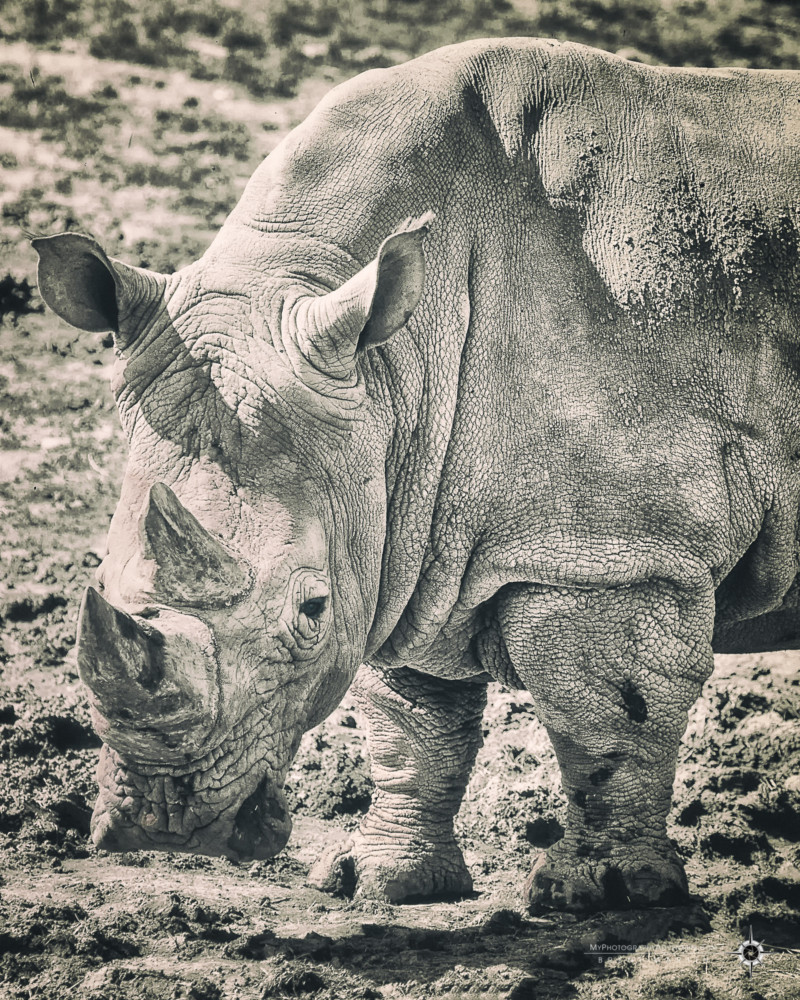World Rhino Day
Image of the Week
World Rhino Day 2018
My calendar is filled with various animal related dates. September 22nd is World Rhino Day, so it seemed like good timing to have my image of the week be a southern white rhino. Although the southern white rhino is doing fairly well, the northern white rhino is functionally extinct at this point. There are two left on our planet, both are female. Short of a miracle, the northern white rhino will be extinct all too soon.
World Rhino Day is an effort to emphasize the need to pay attention to conservation efforts and other factors that contribute to the overall decline in rhino populations. The largest factor impacting rhinos is the illegal trade of their horns. Every day, the planet loses rhinos to poaching, where their horns are cut off after they are killed. There is no purpose here other than greed related to some people having the misconception that there is some medicinal value in the horns. The reality is that the horns are made up of the same type of bodily material as our fingernails. They have no medical value at all.
Image Considerations
I seem to have serious challenges getting decent photos of rhinos. It may be due to not yet having an opportunity to photograph them in the wild. Even without truly being in the wild, San Diego Zoo Safari Park, Fossil Rim, and Safari West are wildlife parks that allow the rhinos to have more freedom to roam than traditional zoos. If you are near any of these wildlife parks, just go!
The challenge I find in photographing rhinos in these environments is they tend to be close to fences and feeding troughs. Ideally, I want to capture an image without any signs of man made structures so the scene looks more natural. “Without the hand of man” is a concept that I learned from Laurie Rubin when I was fortunate enough to have her as a mentor.
This southern white rhino was being fed, so stationary and focused on the food. I needed to find an angle where both the hay on the ground and food in the trough would not be in the frame. If I was not shooting from the park jeep, I could have possibly moved around enough to find the angle I wanted. Fortunately, the jeep driver was very understanding of my goal, and was willing to angle the jeep to help. Don’t hesitate to ask drivers in these situations. I have ended up with drivers who were also photographers, and understood the needs in finding a good scene.
Fortunately for me, as the driver was getting an angle, the rhino took a break from eating and virtually posed for me.
Image Lighting
Lighting can be a serious challenge in zoos and wildlife parks. You do not get much control over when you are able to be in the park. They generally do not open as early in the morning as you would like or remain open as late as you would like for good light. I find that you often have to work with whatever light you get. In this case, my three hour jeep tour left at 9am, and we came to the rhino area about 10:30. Not the worst light, but for sure not the best. In this setting, the morning sun was to the left of the rhino, so one side was very bright while the other was virtually in shadows.
Camera and Settings
I shot this with my Canon 1Ds Mark III and Canon 100-400mm f/4.5-5.6 L IS lens. I was close enough that 200mm was more than enough to frame the rhino. ISO 400 is about the lowest I will use for any type of wildlife to be sure to capture any movement. Rhinos may usually move slowly, but that doesn’t mean they are not capable of moving quickly. ISO 400 also allowed me to keep my minimum shutter speed at 1/400th for this hand held photo.
- 200mm
- f/5.0
- 1/400th
- 0 exposure bias
- ISO 400
Editing Inspiration
I edited this image specifically for World Rhino Day 2018. I had to dig back through my files to find a rhino image worth editing for the day. With all the details in the rhinos hide, I thought black and white would help emphasize them. Once the initial edit was finished, I used an analog filter to give it a slightly older feel. My biggest challenge in this edit was trying to balance the overexposed areas with the areas in shadow. I used more than a few Lightroom brushstrokes with various exposures to not have areas that were over or under exposed.
I am very happy with how this turned out for World Rhino Day 2018!

